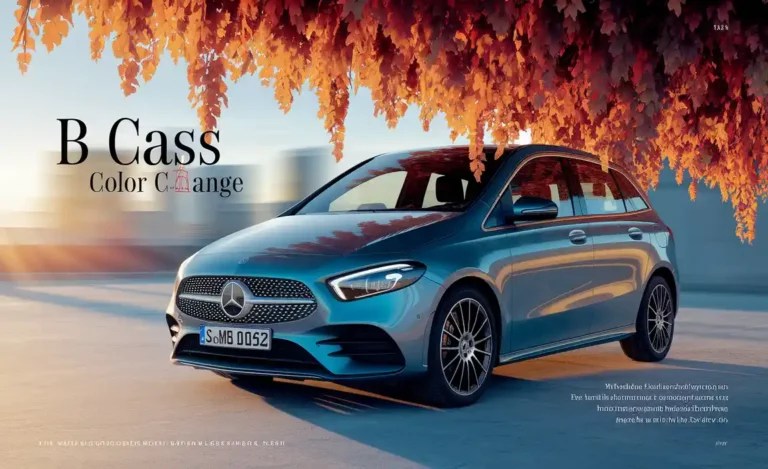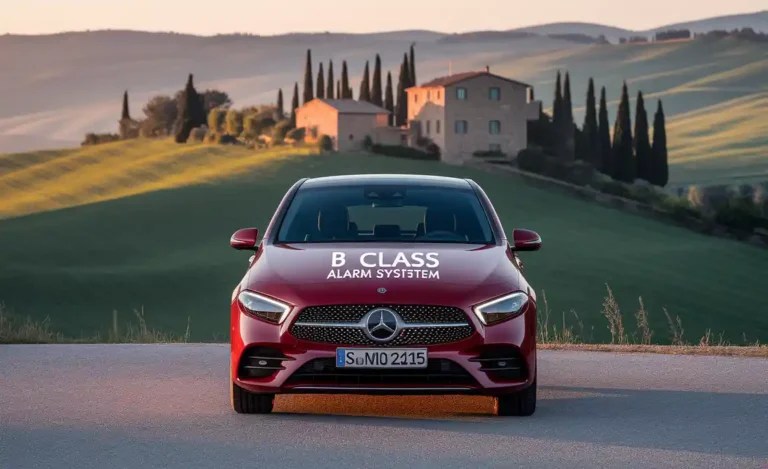B Class Electric Conversion: Ultimate Effortless Drive
B Class Electric Conversion: Unlock an Ultimate, Effortless Drive. Transform your classic Mercedes-Benz B-Class into a quiet, powerful, and environmentally friendly electric vehicle for a modern driving experience.
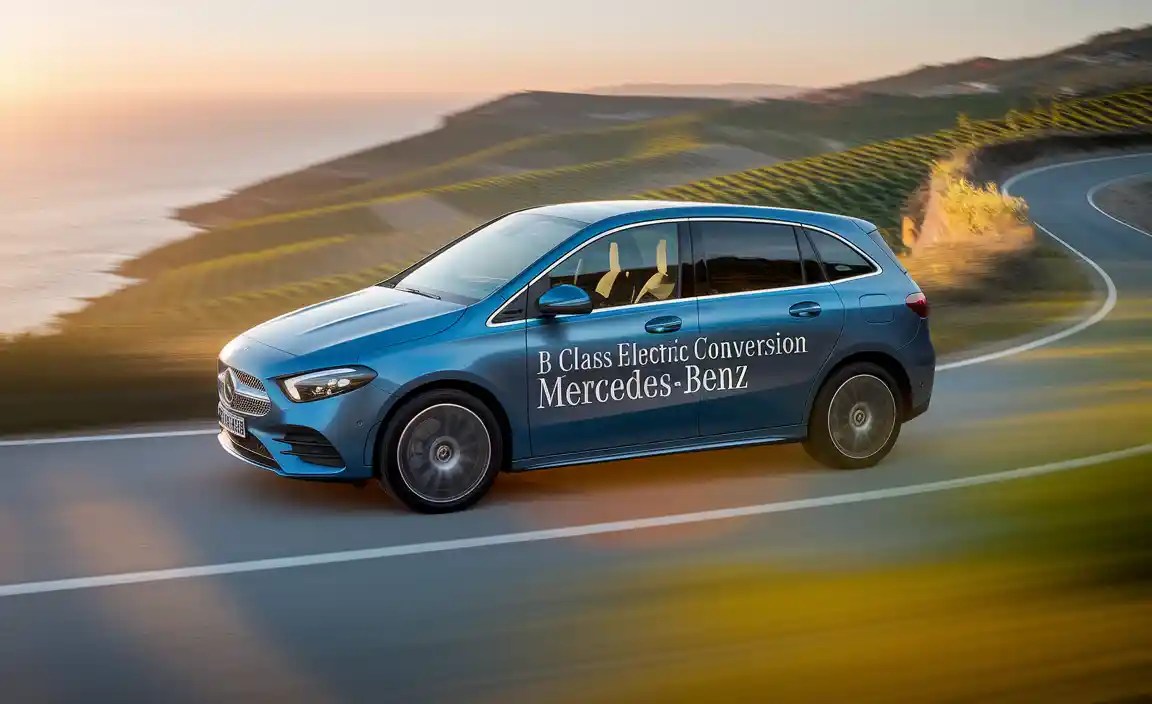
Imagine gliding through city streets or cruising down scenic routes in your beloved Mercedes-Benz B-Class, but with a whisper-quiet electric motor humming beneath the hood. This isn’t a futuristic dream; it’s the reality of a B-Class electric conversion. For owners who cherish the comfort, practicality, and iconic design of their B-Class but desire a more sustainable and modern powertrain, an electric conversion offers an exceptional path forward. It’s about revitalizing a great car for a new era of driving. This guide will demystify the process, making it accessible even if you’re new to automotive electrifications.
Why Consider an Electric Conversion for Your B-Class?
The Mercedes-Benz B-Class, known for its spacious interior, comfortable ride, and solid engineering, remains a desirable vehicle for many. However, the automotive landscape is rapidly shifting towards electric mobility. Converting a B-Class offers a compelling blend of old-world charm and cutting-edge technology, providing a unique driving experience that stands out from the crowd.
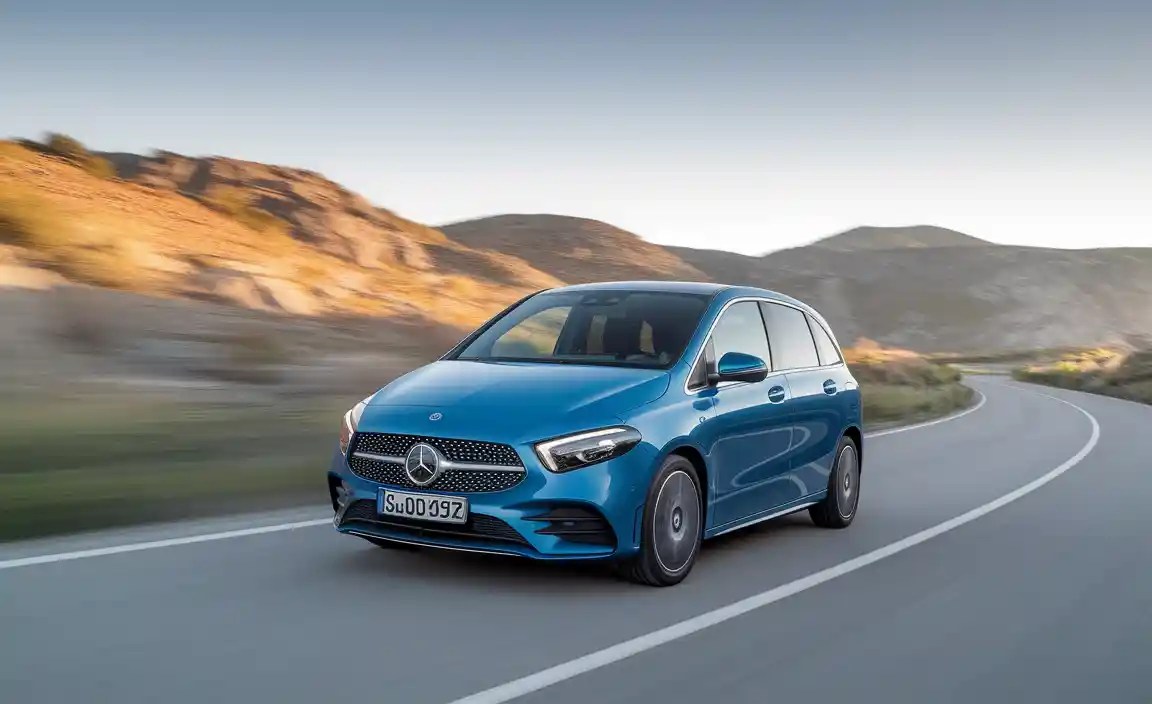
Environmental Benefits
One of the most significant advantages of an electric conversion is its positive environmental impact. Electric vehicles (EVs) produce zero tailpipe emissions, contributing to cleaner air, especially in urban environments. By choosing to electrify your existing B-Class, you’re not just upgrading your car; you’re making a conscious choice to reduce your carbon footprint and support a more sustainable future.
Reduced Running Costs
Electricity is generally cheaper per mile than gasoline or diesel. Furthermore, electric powertrains have fewer moving parts than internal combustion engines, meaning less maintenance. Say goodbye to oil changes, exhaust system repairs, and complex transmission issues. This reduction in both fuel and maintenance expenses can lead to substantial savings over the life of the vehicle.
Enhanced Driving Experience
Electric motors deliver instant torque, providing brisk acceleration and a smooth, responsive driving feel. The quiet operation of an EV drivetrain also transforms the cabin ambiance, making for a more relaxed and serene driving experience. For a car already known for its comfort, like the B-Class, an electric conversion can elevate this to an entirely new level.
Preservation of a Classic
For many, the B-Class represents a significant investment and holds sentimental value. An electric conversion allows you to preserve the body, interior, and overall character of your cherished vehicle while modernizing its most fundamental component: the powertrain. It’s a way to enjoy your car for decades to come, adapted to modern standards and preferences.
Understanding the B Class Electric Conversion Process
Electrifying a vehicle, especially a modern one like the B-Class, involves replacing the entire internal combustion engine (ICE) system with an electric powertrain. This includes the engine, fuel tank, exhaust, and related components, which are swapped out for an electric motor, battery pack, controller, and charging system.
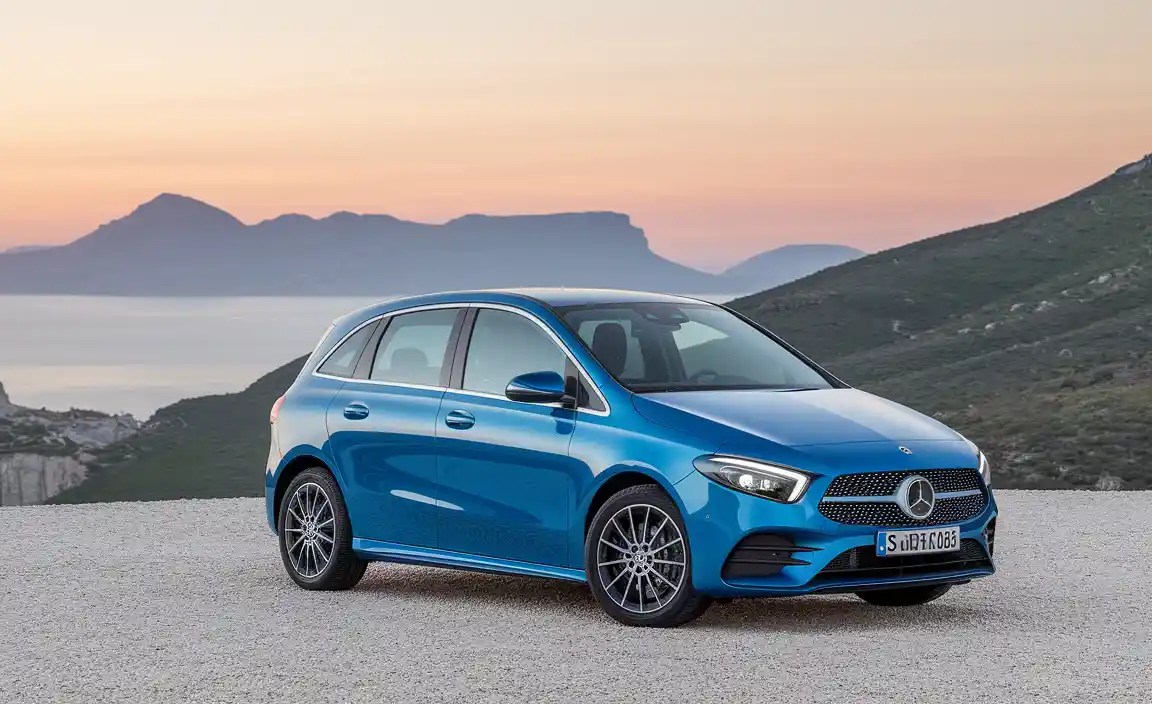
Key Components of an Electric Conversion
A typical B-Class electric conversion will involve integrating the following new components:
- Electric Motor: The heart of the EV, responsible for generating power to turn the wheels.
- Battery Pack: Stores the electrical energy needed to power the motor. The capacity of the battery determines the vehicle’s range.
- Motor Controller (Inverter): Manages the flow of electricity from the battery to the motor, controlling speed and torque.
- On-Board Charger: Converts AC power from a charging station or wall outlet into DC power to charge the battery.
- DC-DC Converter: Steps down high-voltage DC power from the main battery to 12V to power the car’s original accessories (lights, radio, wipers, etc.).
- Thermal Management System: Crucial for maintaining optimal operating temperatures for the battery and motor, ensuring performance and longevity.
- Regenerative Braking System: Captures kinetic energy during deceleration and braking, converting it back into electricity to recharge the battery.
The Role of the Original Chassis and Body
One of the beautiful aspects of converting a B-Class is that the original chassis, suspension, and body are retained. This means you keep the familiar aesthetics, comfort, and practicality that define the B-Class. The conversion focuses purely on replacing the propulsion system, integrating modern EV technology seamlessly without compromising the car’s core identity.
The B-Class’s relatively robust chassis and ample interior space make it a suitable candidate for housing the necessary EV components. Engineers and conversion specialists carefully consider weight distribution, structural integrity, and space optimization to ensure the converted vehicle is safe, balanced, and functional.
Choosing the Right Conversion Path: DIY vs. Professional
Deciding whether to undertake an electric conversion as a DIY project or to hire a professional conversion specialist is a critical first step. Both approaches have their pros and cons, largely dependent on your technical skills, budget, and desired outcome.
DIY Conversion: The Enthusiast’s Challenge
For the mechanically inclined and technically savvy individual, a DIY conversion can be an incredibly rewarding experience. It offers the ultimate control over component selection, budget, and execution. However, it demands a deep understanding of automotive systems, electrical engineering, and fabrication skills. It also requires meticulous planning, sourcing of reliable parts, and significant time investment.
Pros of DIY:
- Complete control over the project.
- Potential for significant cost savings.
- Deep personal satisfaction and learning experience.
Cons of DIY:
- Requires advanced technical expertise and tools.
- Time-consuming and potentially complex.
- Risk of errors leading to safety issues or poor performance.
- Warranty and support are typically non-existent.
Professional Conversion: The Effortless Drive
Hiring a professional conversion shop offers a more streamlined and often higher-quality outcome. These specialists have the expertise, tools, and experience to perform conversions safely and efficiently, adhering to industry best practices and often offering warranties on their work. While more expensive, it alleviates the stress and complexity of the conversion process, ensuring a reliable and performant electric B-Class.
Pros of Professional Conversion:
- Expertise ensures safety and reliability.
- Often comes with warranties and ongoing support.
- Faster turnaround time compared to DIY.
- Access to specialized equipment and knowledge.
Cons of Professional Conversion:
- Significantly higher cost.
- Less control over specific component choices.
- Finding a reputable specialist can be challenging.
The Conversion Steps: A Simplified Overview
While the exact process varies between DIY and professional conversions, the fundamental steps remain similar:
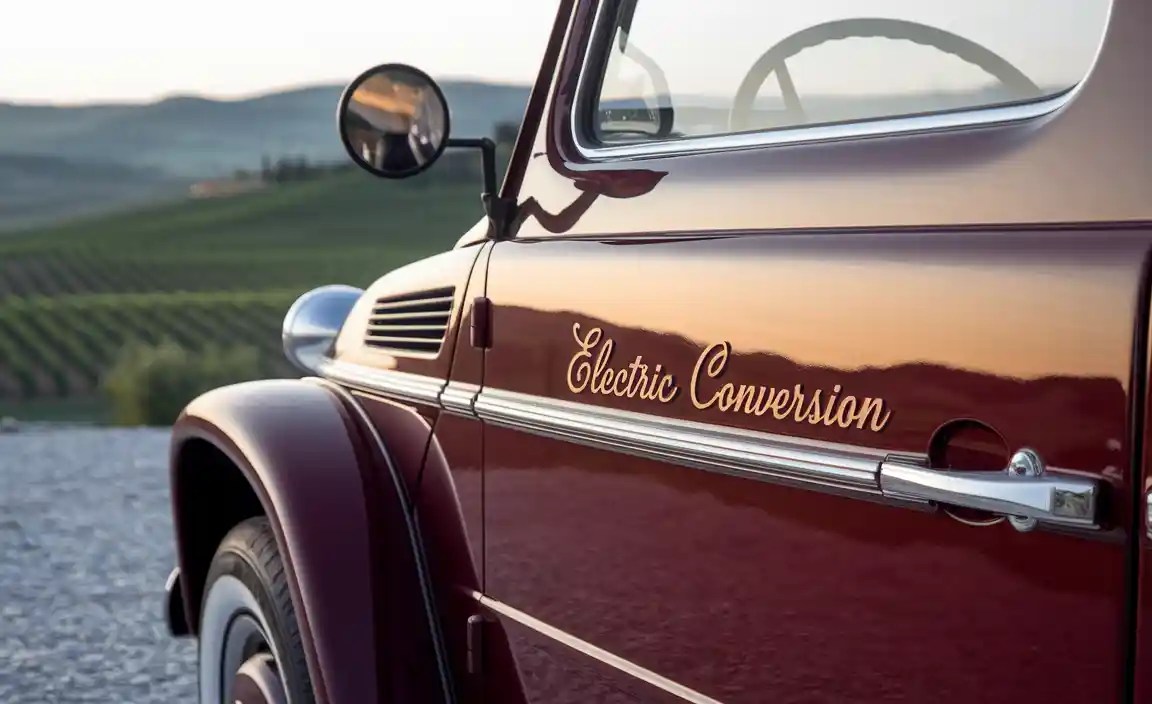
- Assessment and Planning: Determine the desired range, performance targets, and budget. Select appropriate electric motor, battery capacity, and controller. Plan the placement of components considering weight distribution and accessibility.
- Component Sourcing: Acquire all necessary EV components, including motor, battery, charger, controller, wiring harnesses, and cooling systems.
- ICE System Removal: Carefully remove the internal combustion engine, fuel tank, exhaust system, radiator, and related ancillaries. This frees up space and reduces weight.
- Powertrain Integration: Mount the electric motor and adapt it to the existing transmission or drivetrain. Install the battery pack, typically in the space formerly occupied by the engine, fuel tank, or trunk floor, ensuring secure mounting.
- Electrical System Installation: Wire the motor controller, charger, DC-DC converter, and battery management system (BMS). Integrate the EV system with the vehicle’s 12V accessory systems.
- Cooling and Thermal Management: Install a robust cooling system for the motor and battery, which is vital for performance and longevity.
- Instrumentation and Controls: Adapt or install new gauges to display EV-specific information like battery state of charge, motor temperature, and power consumption.
- Testing and Tuning: Thoroughly test all systems for functionality and safety. Tune the motor controller for optimal performance and efficiency.
- Final Inspection and Certification: Conduct a comprehensive safety inspection, potentially requiring certification depending on local regulations.
Performance and Range Expectations
The performance and range of a converted B-Class depend heavily on the specific components chosen, particularly the size and chemistry of the battery pack and the power of the electric motor. Modern EV technology offers significant flexibility.
Battery Capacity and Range
Battery capacity is measured in kilowatt-hours (kWh). A larger kWh rating means more energy storage and thus a longer range. For a daily driver B-Class, common conversions might aim for ranges similar to contemporary EVs. For instance, a 50-75 kWh battery pack could provide a real-world range of 150-250 miles, depending on driving style and conditions.
Various battery chemistries exist, with Lithium-ion variants being the most common due to their energy density and lifespan. Reputable suppliers are crucial for ensuring battery safety and performance. Resources like the U.S. Department of Energy’s Advanced Vehicles website offer insights into battery technologies.
Motor Power and Acceleration
Electric motors offer a wide range of power outputs. For a B-Class, a motor providing around 100-150 kW (approximately 135-200 horsepower) is generally sufficient to provide brisk acceleration that feels significantly quicker than the original ICE. The instant torque of electric motors makes them feel particularly sprightly in urban driving and during initial acceleration from a standstill.
Performance Comparison Table
| Metric | Internal Combustion Engine (ICE) B-Class (Approx.) | Electric Conversion (Example) |
|---|---|---|
| Power Output | 90-150 kW (120-200 hp) | 100-150 kW (135-200 hp) |
| Torque | 200-250 Nm | 300-500+ Nm (Instantaneous) |
| 0-60 mph | 8-10 seconds | 6-8 seconds |
| Range | 300-400 miles (approx. per tank) | 150-250 miles (depending on battery size) |
| Refuel/Recharge Time | 5 minutes | 30-60 minutes (DC Fast Charge) to 8-12 hours (Level 2 Home Charge) |
| Emissions | Tailpipe CO2 and other pollutants | Zero tailpipe emissions |
This table illustrates how an electric conversion can maintain or even enhance performance while drastically improving environmental impact and potentially reducing running efficiency, albeit with different refueling characteristics—charging versus filling up with gasoline.
Charging Your Electric B-Class
Understanding charging is fundamental to owning an EV. While the charging infrastructure is still evolving, it’s become much more convenient than it once was.
Home Charging (Level 1 & 2)
Level 1 Charging: Uses a standard 120V household outlet. It’s the slowest method, typically adding only a few miles of range per hour. It’s suitable for overnight charging if you have a low daily mileage or as a backup. You can learn more about home charging options from resources like the U.S. Department of Energy’s FuelEconomy.gov, which offers guidance on EVs and charging.
Level 2 Charging: Uses a 240V outlet (similar to what large appliances use) and a dedicated charging station (EVSE). This is the most common and practical method for home charging. A typical Level 2 charger can fully recharge most EV batteries overnight, providing a convenient way to start each day with a full charge.
Public Charging (Level 3 – DC Fast Charging)
Public charging stations, especially DC Fast Chargers (Level 3), offer the quickest way to add range on the go. These stations can add hundreds of miles of range in under an hour, making them ideal for road trips. Compatibility and charging speeds vary between different charging networks and vehicle models.
Cost Considerations for a B-Class Electric Conversion
The cost of an electric conversion can vary significantly, ranging from around $15,000 for a very basic DIY conversion using salvaged parts to upwards of $30,000-$50,000+ for a professional conversion using high-quality, new components with a substantial battery pack and advanced features. The main cost drivers are:
- Battery Pack: This is often the most expensive single component, with costs fluctuating based on capacity, chemistry, and supplier.
- Electric Motor and Controller: While less costly than batteries, high-performance motors and sophisticated controllers can add to the overall price.
- Labor: For professional conversions, the specialized labor involved in integration, fabrication, and wiring is a significant cost factor.
- Ancillary Systems: On-board chargers, DC-DC converters, cooling systems, and custom dashboards also contribute to the total expenditure.
- Integration Complexity: The more complex the integration with the original vehicle’s systems (e.g., power steering, climate control), the higher the cost.
Many regions offer tax credits or rebates for electric vehicle conversions, which can help offset some of the initial investment. It’s worth researching government incentives and local grants available for electrifying vehicles. Tools like the EPA’s web pages on electric vehicles can provide broader context on EV incentives.
Maintaining Your Converted B-Class
One of the major benefits of an electric conversion is the drastic reduction in maintenance requirements compared to a traditional ICE vehicle.
What You Can Forget About:
- Oil changes
- Spark plug replacements
- Exhaust system repairs
- Fuel filter changes
- Emission system checks
- Transmission fluid flushes (in many cases, if a direct-drive motor is used or the original gearbox is adapted simply)
What to Keep an Eye On:
- Battery Health: Monitor battery state of charge and overall health through the Battery Management System (BMS).
- Brake System: Regenerative braking reduces wear on friction brakes, but they still require periodic inspection and maintenance.
- Cooling System: Ensure the coolant levels and system integrity for the battery and motor are maintained.
- Tires: EVs can sometimes be heavier due to batteries, and the instant torque can lead to increased tire wear if not managed.
- Suspension and Chassis: Regular checks as you would any vehicle to ensure structural integrity and ride comfort.
- 12V Accessory Power: The DC-DC converter ensures your lights, radio, etc., are powered. Its functioning should be monitored.
The simplicity of the electric powertrain generally translates to fewer mechanical issues and a more reliable vehicle overall. Reputable conversion specialists often provide recommended maintenance schedules for the specific components they install.
FAQ: Your B Class Electric Conversion Questions Answered
Q1: Is an electric conversion legal?
A1: Yes, electric vehicle conversions are legal in most regions. However, regulations can vary, especially concerning safety standards, emissions (for the initial conversion process), and registration. It’s essential to check with your local Department of Motor Vehicles (DMV) or equivalent authority.
Q2: Can I convert any B-Class model?
A2: Generally, yes. While newer models might have more integrated electronics that can be complex to work around, the fundamental process of replacing the ICE is applicable to most B-Class generations. The exact feasibility and complexity can depend on the specific model year and its existing systems.
Q3: How long does an electric conversion take?
A3: For a professional conversion, it typically takes anywhere from 3 to 8 weeks, depending on the shop’s schedule and the complexity of the project. A DIY conversion can take many months or even over a year, depending on the builder’s skill, available time, and resources.
Q4: What kind of range can I expect from a converted B-Class?
A4: Range is highly dependent on the battery pack size. With a reasonably sized pack (e.g., 50-75 kWh), you could expect 150-250 miles, similar to many modern EVs. Smaller packs will offer less range, while larger, more expensive packs can extend it further.
Q5: Will my B-Class still have power steering and air conditioning?
A5: Yes. Electric conversion kits usually include electric pumps for power steering and AC compressors that run off the main battery pack or the 12V system via the DC-DC converter. You’ll retain these essential conveniences.
Q6: What happens to the original transmission?
A6: This varies. Some conversions retain the original gearbox and adapt the electric motor to it, often using it in a single gear. Others might remove the gearbox entirely




